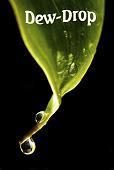PURE WATER FROM FOG (MOISTURE TRAP)
Before getting into how to extract water from fog, I would like to go over what fog actually is. Fog is considered a cloud that touches or contacts the ground. This ground hugging mist is actually tiny
water droplets suspended in the air. In essence, it is a low cloud. Mist that is dense enough to make visibility challenging (under 5/8 of a mile). The thickness of water particles is dense enough for us to trap (or tap) directly out of the air. Because fog is evaporated water, it is "pure" right from Mother Nature. Ready to drink. This is providing you don't live in an area that has heavy industry with air borne pollutants.
Fortunately, most common fog occurs in relatively clean areas, coastal locations that have a high relative humidity - 95% plus. Conditions have to be right to suspend massive amounts of water droplets in the air. Most of the fog we see and feel is caused by a temperature inversion. Typically any area that has either a warm air mass meeting a cool one can generate fog, but the most common occurrence is when warm and cool ocean currents meet. Warmer air above the ground traps cooler air on the ground or sea. This type of temperature inversion is sometimes called radiation fog. This can be a seasonal event and usually is. The dropping air temperatures condense their moisture laden load over warmer water currents and forms a moisture blanket that drifts over land until the water cools or most of the moisture is extracted from the air.
Since warm air holds more moisture fog is the result of that warm air cooling.

Pure Water from Fog
Can water be harvested from fog? Yes!
Survivalists use a crude method of this water gathering system by collecting water from leaves of plants. This is normally done in early morning when the fog is thickest. Everything will be covered in a layer of moisture. The leaves will act as natural water traps. Through many steps, water is collected from one leaf at a time and usually drained into a canteen or bottle. This provides some of the water needed for drinking throughout the day.
Fog collection systems have a proven track record for collecting pure water in arid climates. There must be bitter irony that some locations in the world have so little rainfall, yet so much fog.
As with so many things in life, the fog water trap started almost as a lark. In deforested hillsides in Chile, seedlings were planted. A lot of these new trees dried but a few lived. It was noted that the few seedlings that did make it had a quantity of rocks around and above it. This led to experiments using moisture capture nets in which collected fog would gather and drip off providing a lot more water for a number of plants.
The inhabitants of this dry area soon learned to capture water for themselves. To begin with a vertical net was positioned on the hillside facing the incoming fog. Various troughs were used at the bottom of the collection nets, which fed into buckets. More permanent capture / storage systems were built with storage tanks under ground. Multiple fog nets sandwiched together captured more moisture, thus a higher recovery rate was achieved. Maximum water recovery was where the fog moved across the hillside the fastest while using multiple nylon or plastic coarse nets which would allow 30 - 40% air passage through them.
|



